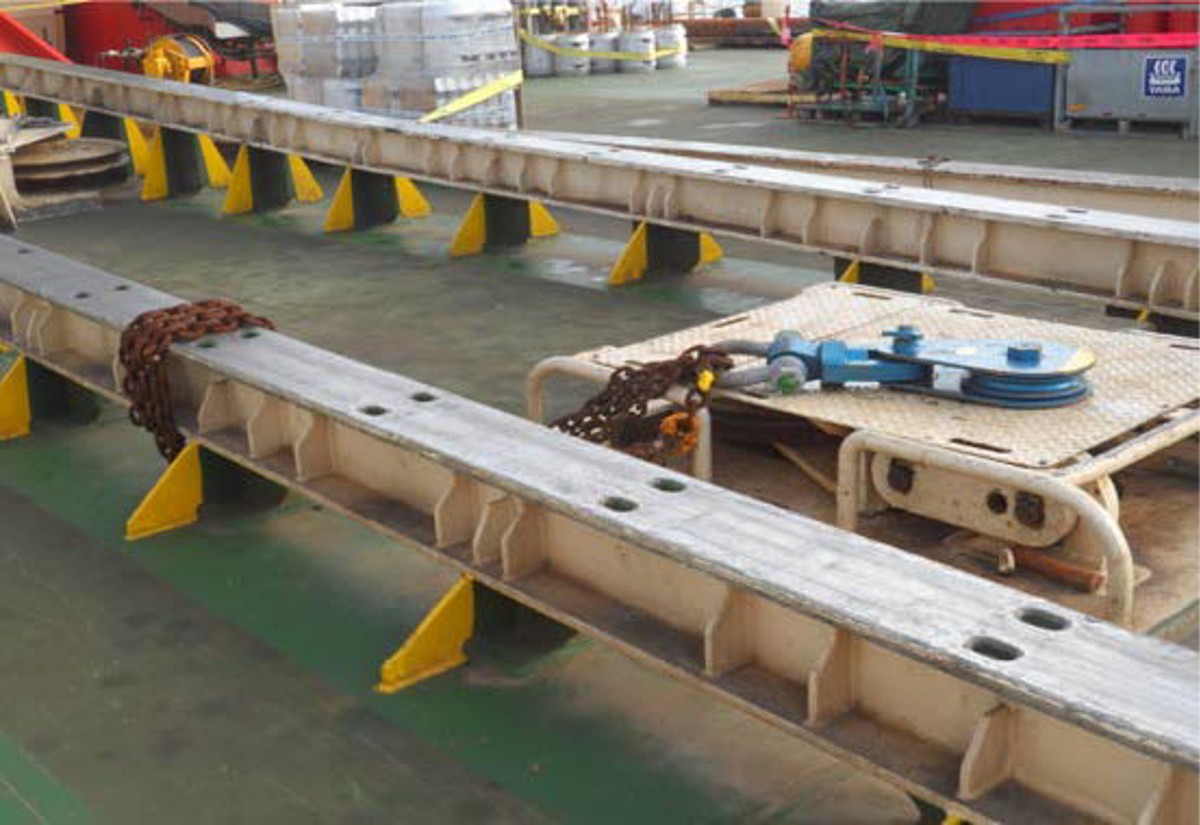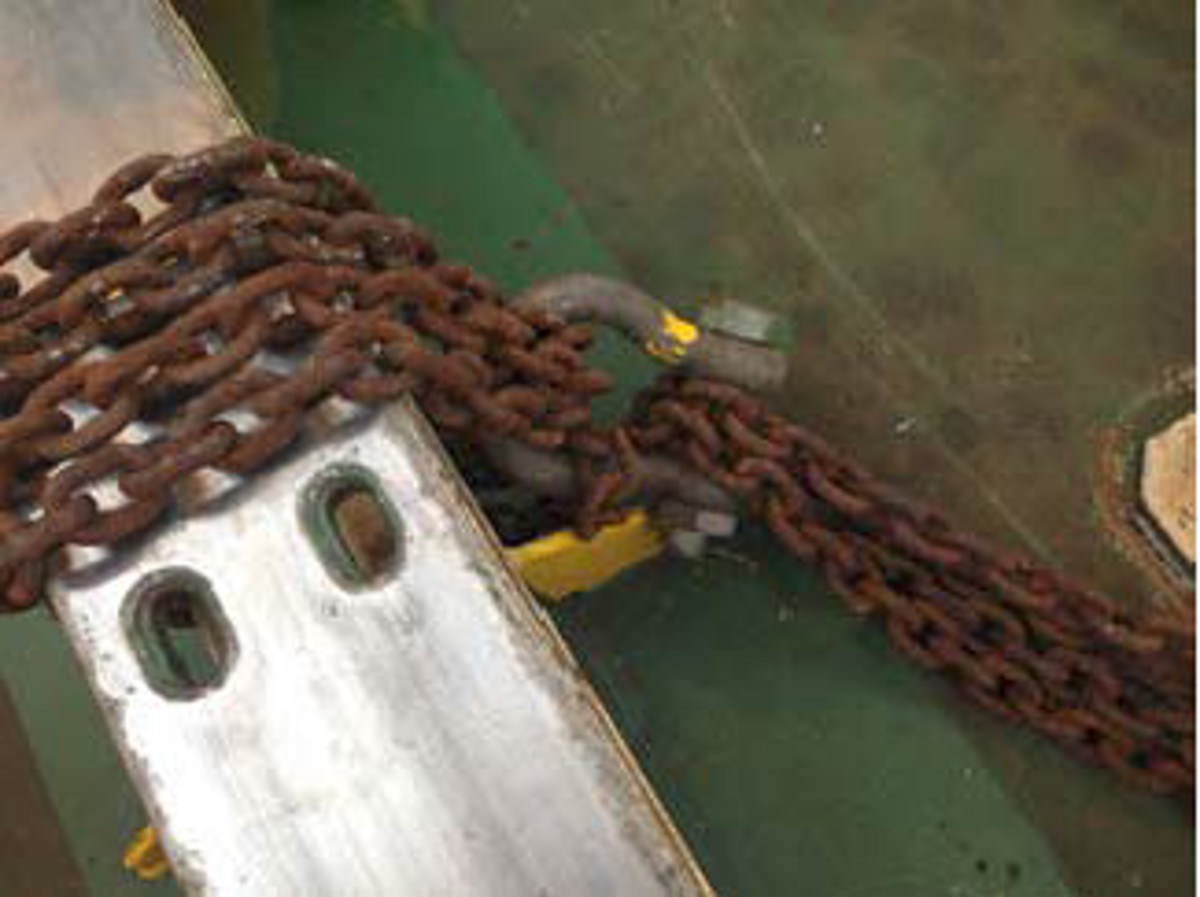Near-miss: Anchoring of rigging to uncertified points
- Safety Flash
- Published on 16 January 2015
- Generated on 29 December 2025
- IMCA SF 01/15
- 2 minute read
Jump to:
A member has reported a near miss incident in which rigging was anchored to uncertified points.
What happened?
The incident occurred during pipelay operations onboard a vessel. A temporary rigging solution using chains and shackle and snatch-block was used to control the position of a winch wire. This temporary rigging arrangement was then anchored to deck rails which were not designed to take side loads. The use of deck rails or other uncertified structures as an anchorage point is hazardous.
An unapproved anchorage point had the potential to lead to injury to personnel and/or damage to the equipment. Although this rigging arrangement did not, in this case, lead to an incident, our member considered that it was bad practice which could easily have done so.

snatch block anchored to deck rail

chain secured inappropriately
Findings
Our member’s investigation established that:
- The deck rail was not designed to take side loading and as a result could have led to injury to personnel and/or damage to the equipment.
- The deck rail was not a certified rigging/lifting point; such lifting points are or should always be appropriately marked as such.
- The deck rail did not undergo statutory periodic thorough examinations as required by local regulatory requirement.
Lessons learnt
Our member reiterated the lessons that:
- Only certified rigging/lifting points should be used for this type of operation.
- Anchorage points should be clearly marked with the safe working load before they are considered safe to use.
- The use of existing ship structures for this type of operation should not be permitted.
Members should also refer to IMCA LR006 - Guidelines for lifting operations
Related safety flashes
-
IMCA SF 01/11
27 January 2011
-
IMCA SF 12/09
17 August 2009
IMCA Safety Flashes summarise key safety matters and incidents, allowing lessons to be more easily learnt for the benefit of the entire offshore industry.
The effectiveness of the IMCA Safety Flash system depends on the industry sharing information and so avoiding repeat incidents. Incidents are classified according to IOGP's Life Saving Rules.
All information is anonymised or sanitised, as appropriate, and warnings for graphic content included where possible.
IMCA makes every effort to ensure both the accuracy and reliability of the information shared, but is not be liable for any guidance and/or recommendation and/or statement herein contained.
The information contained in this document does not fulfil or replace any individual's or Member's legal, regulatory or other duties or obligations in respect of their operations. Individuals and Members remain solely responsible for the safe, lawful and proper conduct of their operations.
Share your safety incidents with IMCA online. Sign-up to receive Safety Flashes straight to your email.